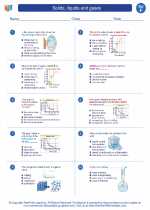Satellite
A satellite is an object that orbits around a larger object. In the context of space and astronomy, satellites are often artificial objects placed in orbit around the Earth for various purposes, such as communication, navigation, weather monitoring, and scientific research.
Types of Satellites
There are several types of satellites, including:
- Communication Satellites: These satellites are used to facilitate communication by relaying signals between different locations on Earth.
- Navigation Satellites: These satellites are designed to provide positioning and timing information for navigation purposes, such as the Global Positioning System (GPS).
- Weather Satellites: These satellites are equipped with instruments to monitor and study the Earth's atmosphere, weather patterns, and climate changes.
- Observational Satellites: These satellites are used for scientific research, Earth observation, and imaging of the planet's surface.
Orbital Characteristics
Satellites orbit the Earth at various altitudes and inclinations, depending on their intended purpose. The orbit of a satellite can be classified into different types, such as geostationary, low Earth orbit (LEO), medium Earth orbit (MEO), and polar orbit.
Launch and Deployment
Satellites are launched into space using rockets and are deployed into their respective orbits once they reach a certain altitude. The deployment process can vary depending on the type of launch vehicle and the specific requirements of the satellite mission.
Study Guide
Here are some key points to focus on when studying the topic of satellites:
- Understand the purpose and function of different types of satellites, including communication, navigation, weather, and observational satellites.
- Learn about the orbital characteristics of satellites, including altitude, inclination, and orbital period.
- Explore the launch and deployment process for satellites, including the role of launch vehicles and the methods used to place satellites into orbit.
- Consider the advancements and future developments in satellite technology, such as small satellites, satellite constellations, and space exploration missions.
◂Science Worksheets and Study Guides Sixth Grade. Solids, liquids and gases

 Activity Lesson
Activity Lesson
 Worksheet/Answer key
Worksheet/Answer key
 Worksheet/Answer key
Worksheet/Answer key
 Worksheet/Answer key
Worksheet/Answer key
 Vocabulary/Answer key
Vocabulary/Answer key
 Vocabulary/Answer key
Vocabulary/Answer key
